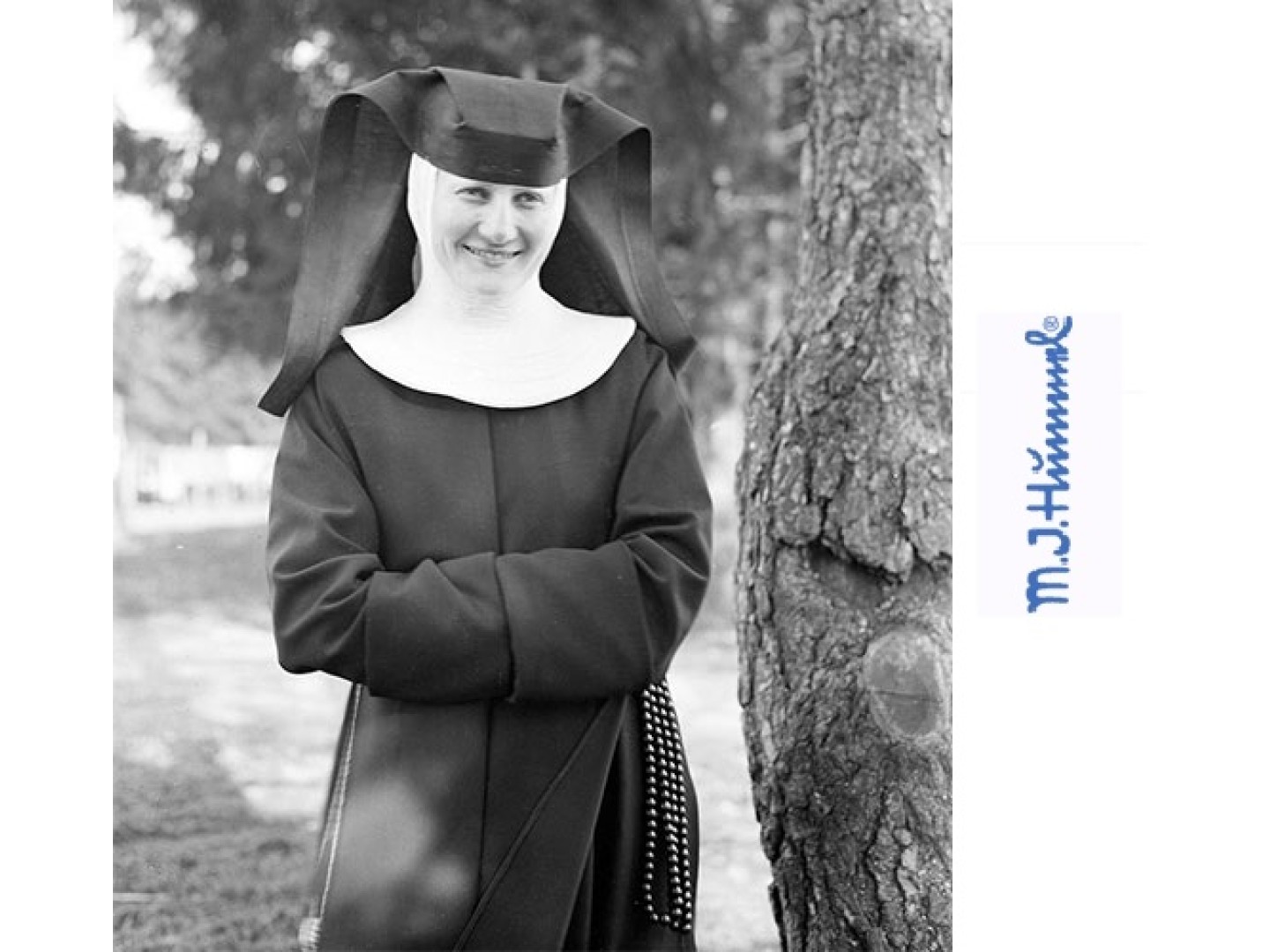Introduction
Hummel figurines are arguably the world’s most beloved of collectible figurines. They are beautifully crafted depictions of the innocence of childhood. These figurines and the M.I.Hummel brand are the result of a successful partnership between W.Goebel Porzellanfabrik and a talented German artist, Sister Maria Innocentia Hummel. Read on for more about Sister Maria Innocentia Hummel and the history of these delightful figurines.
Sister Maria Innocentia Hummel
Maria Innocentia Hummel was born Berta Hummel in Bavaria in 1909. Her family had a general store in the little village of Massing. Berta, the third of six children, lived with her family above the family store.
Berta’s father was also an artist and from a very early age Berta's inherited artistic ability was evident. Her teachers and classmates were amazed by her perceptive sketches. At the age of 12, a teacher recommended that Berta be sent to the Institute of English Sisters, Marienhoehe. This boarding school was a financial burden for her family but her father was determined to provide Berta the opportunities he had been denied.
At Marienhoehe, under the tutelage of Sister Stephania, Berta's art was encouraged to blossom. She learned new techniques and to use new media, including watercolors and pastels. Berta stayed at Marienhoehe until she was 18 and had reached the limits of professional development that rural Bavaria could offer. In 1929 she moved to Munich to study at the famed Academy of Applied Arts, further enhancing her artistic skills.
Berta was a quiet student, preferring her home in a Catholic dormitory to the more social aspects of student life. She produced impressive work as a student but still enjoyed sketching scenes of her childhood; caricatures of innocent Bavarian children going about their daily lives. In 1931, Berta graduated at the top of her class and was invited to teach at the Academy. She declined.
Religion had always been important to Berta and during her time at the Academy she met and befriended two Franciscan Sisters, Laura and Kostka, who were training as art teachers. As Berta grew closer to these friends, she learned more of their Franciscan Order and her future suddenly became clear to her. After graduation, Berta entered the Convent of Siessen, determined to dedicate her life and her art to the service of God.
Siessen was a self-supporting Convent deep in the German countryside, founded by the Dominicans in 1259. In 1860, the Convent passed to a Franciscan Order dedicated to teaching and supportive of the arts. Berta was one of about 250 Franciscan Sisters to call Siessen home at the time.
In the quiet isolation and serenity of the Convent, Berta found time to pursue her own artwork outside of her mundane Convent duties and the art classes she gave at a nearby girls’ school, St. Anna in Saulgau. Among other more ostentatious religious paintings, she continued her sketches of childhood innocence, including portraits of her students at St. Anna. Berta was popular and happy.
When Berta completed her novitiate, in 1931, she took the name Maria Innocentia, dedicating the remainder of her life to her faith. In 1934, to support the Convent’s teaching efforts, Sister Hummel’s artwork was published in an art book (Das Hummel Buch), along with related poetry by Margaret Seeman, and as postcards. This published artwork came to the attention of Franz Goebel.
M.I.Hummel Figurines
In 1935, Franz Goebel, owner of the renowned porcelain firm W.Goebel Porzellanfabrik and great grandson to the original founder of the Goebel company, convinced Sister Hummel to let his company turn her two dimensional images into tree dimensions. Exactly how this happened is open to debate but Franz was clearly looking for new opportunities to pursue and he saw Sister Hummel’s artwork as ideal for a line of figurines.
Sister Hummel was shown clay models based on her drawings and on January 9, 1935 she signed an agreement giving Goebel sole manufacturing and distribution rights to transform her original drawings into M.I. Hummel figurines. As part of this agreement, Sister Hummel retained final artistic control and approval and a commitment that her facsimile signature would appear on each piece. It was agreed that the fine-grained earthenware, pioneered by Goebel in 1926, would be the medium for the new line of figurines.
The range was launched in 1935 at the Leipzig Spring Fair, a major international trade show, and they generated much attention from major buyers. This successful show led to a quick increase in the M.I. Hummel line over the next 4 years.
The coming of World War II was a great toll on Goebel and also on the convent where Sister Hummel lived. Figurine production was severely restricted during the war, but at the end of the war, the M.I.Hummel figurines once again grew in popularity, with many being purchased by American G.I.s stationed in Germany. Unfortunately the recovery of Goebel and the M.I.Hummel figurines was not a fate shared by Sister Hummel herself. During the war she had contracted a lung ailment, which was eventually diagnosed as tuberculosis. This illness led to her untimely death on November 6, 1946 at the young age of 37.
Thankfully, Sister Maria Innocentia Hummel was prolific and left behind an extensive collection of artwork. After her death, an Artistic Board was appointed at the Convent of Siessen as guardians of her legacy, through which figurines still have to be approved today. The Convent of Siessen and Goebel work together to insure that the authenticity and decoration that Sister Hummel insisted on is still produced in the M.I.Hummel figurines.
© 2007 Woolvey LLC


